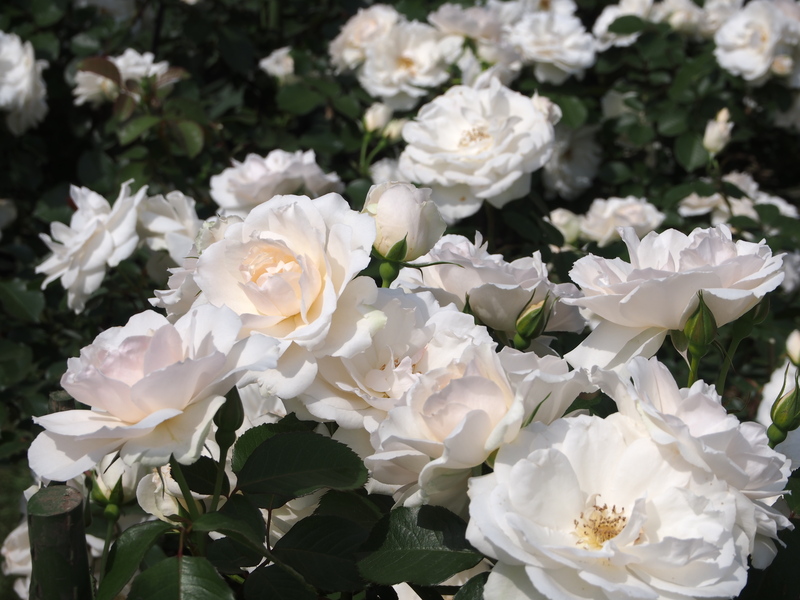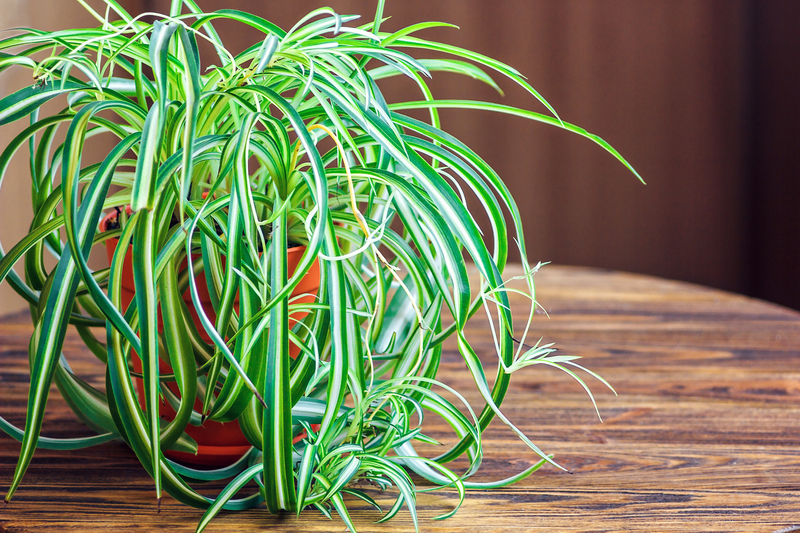How to Grow a Canine-Approved Garden
Posted on 12/06/2025
How to Grow a Canine-Approved Garden: The Ultimate Guide for Pet Owners
For devoted dog owners, the garden is more than just a green escape--it's a shared haven. But cultivating an outdoor space that's safe, stimulating, and healthy for your four-legged friend requires thoughtful planning. In this comprehensive guide, we'll walk you through how to grow a canine-approved garden that both you and your pup will love.
Why Design a Dog-Friendly Garden?
Cultivating a dog-friendly garden gives your pet a safe place to play, exercise, and relax. It also helps to prevent destructive behaviors by channeling your dog's energy in positive ways. By growing a canine-approved garden, you can harmonize your love for gardening with your pet's well-being.

Planning Your Canine-Approved Garden
1. Assess Your Dog's Needs and Behavior
- Breed and Energy Level: Active breeds may need larger, more open spaces, while smaller or older dogs may appreciate cozy nooks and shaded resting spots.
- Favorite Activities: Observe whether your dog loves digging, chasing, lying in the sun, or chewing. Design elements around these habits.
- Sensitivities and Allergies: Some dogs can be allergic to certain plants or mulches. Understand yours to avoid potential issues.
2. Choose the Right Location
Your canine-approved garden should offer a balance of sun, shade, and protection. Dogs adore basking in the sun but also require cool, shady spots for resting, especially in hotter weather. Moreover, ensure your garden is visible from the home so you can supervise your pet.
Selecting Safe Pet-Friendly Plants
The heart of a dog-appropriate garden is choosing plants safe for dogs. Avoiding toxic plants is vital for your pup's health. The following sections outline the best choices and those to avoid.
Top Dog-Safe Plants
- Marigolds (Tagetes): These bug-repelling annuals are nontoxic to dogs and brighten up any bed.
- Sunflowers (Helianthus): Cheerful and safe, sunflowers are great for creating towering backdrops.
- Snapdragons (Antirrhinum): These colorful blooms add height and texture to your landscape.
- Rosemary & Thyme: Both are wonderful for puppies who love to sniff, and they're culinary herbs you can use, too!
- Fuchsias: Their vibrant, dangling flowers excite dogs without presenting any toxic risk.
- Spider Plant (Chlorophytum comosum): Hardy, adaptable, and nontoxic if your canine decides to take a nibble.
Plants to Avoid in a Dog Garden
Many common plants can be toxic to dogs. Steer clear of the following in your canine-safe garden landscape:
- Azaleas and Rhododendrons
- Oleander
- Sago Palm
- Lilies (especially dangerous for both cats and dogs)
- Foxglove
- Daffodils and Tulips (bulbs are especially hazardous)
- Autumn Crocus
Before introducing any new plant, verify its safety with trusted sources such as the ASPCA's comprehensive toxic and non-toxic plant list.
Designing a Garden Dogs Can Enjoy
Incorporate Durable, Pet-Safe Materials
Your canine-friendly outdoor space must endure both rough-and-tumble play and the demands of weather. Use materials that are tough and gentle on paws:
- Hardscape: Choose flagstone, pea gravel, or brick, as they are cool, comfortable, and don't overheat like concrete or asphalt.
- Mulch: Avoid cocoa mulch--it's toxic to dogs. Instead, use shredded pine, cedar, or hemlock mulch, which are much safer options.
- Fencing: A sturdy, escape-proof fence ensures your pet stays safe in your backyard haven.
Dog Paths and Designated Runways
Dogs instinctively patrol the perimeter of their territory. Encourage healthy exploration and reduce plant trampling by establishing pathways just for them. Lay them with soft mulch or grass and border with tougher plants like ornamental grasses or low-growing shrubs.
Create Opportunities for Play and Rest
- Shady Retreats: Add strategically placed trellises, small trees, or pergolas draped with safe climbing vines for cool resting spots.
- Water Features: Consider a small, shallow dog pool or splash fountain for play, but avoid deep ponds and stagnant water, which can harbor bacteria or pose drowning risks.
- Digging Zone: If your dog loves to dig, give them a designated sandbox filled with clean sand and buried toys.
- Obstacle Courses: Incorporate logs, boulders, or agility tunnels to keep active dogs entertained and exercised.
Soil, Fertilizer, and Maintenance for Dog-Safe Gardens
Choose Safe Soil and Fertilizers
Healthy soil is the foundation for any garden, but some additives and fertilizers are hazardous to pets. For growing a truly dog-safe garden, always choose:
- Organic compost and manure that contains no added chemicals or synthetic ingredients.
- Pet-safe fertilizers, especially those labeled organic and all-natural and free from blood meal, bone meal, and other animal byproducts that can entice and harm dogs.
- Avoid pesticides and herbicides. Instead, use companion planting and natural predators (like ladybugs) to control pests.
Composting: The Canine Perspective
If you compost at home, always keep your compost bin secure. Decomposing food can create mold and toxins dangerous to dogs. Fence your compost or use sealed containers--never let your dog rummage through garden waste.
Dealing with Common Garden Hazards for Dogs
Garden Hazards to Avoid
- Sharp Tools: Always store garden tools and chemicals out of reach.
- Thorny or Spiky Plants: Be cautious with roses, cacti, or yuccas. Choose softer foliage where your dog can brush by without getting hurt.
- Pools and Deep Water: Supervise dogs around water features to prevent accidents.
Managing Dog Urine in the Garden
Dog urine can create yellow patches on the lawn due to its nitrogen content. To minimize damage:
- Train your dog to use a gravel or sand area specially created for bathroom breaks.
- Water the lawn regularly to dilute urine spots.
- Choose tougher, urine-tolerant grasses like ryegrass or fescue for your canine-friendly garden.
Creative Elements for Dog Enrichment
Edible Dog Gardens
Grow a dedicated patch with herbs and vegetables your dog can safely sample:
- Carrots, peas, and green beans (excellent snacks!)
- Blueberries, strawberries, and melons (in moderation)
- Mint, parsley, and basil (freshens breath and is safe in small amounts)
Hidden Treats and Scent Games
Dogs love engaging all their senses. Hide treats or toys in corners of your garden, under stones, or inside safe shrubs to encourage natural sniffing and foraging instincts. Set up puzzle feeders or snuffle mats among the garden beds for bonus fun.
Seasonal Care for Your Dog-Approved Garden
Summer
- Ensure regular access to clean, fresh water.
- Provide ample shade to prevent overheating.
- Keep an eye out for harmful insects like ticks and fleas.
Winter
- Clear snow and ice from paths regularly to prevent slips.
- Store de-icing salts away from areas your dog uses; many are toxic if licked off paws.
Spring & Autumn
- Clean up fallen leaves, branches, and flowers that can harbor pests or create slippery surfaces.
- Inspect fences and gates for wear as changing weather can cause damage.
Best Practices for a Happy, Healthy Dog Garden
- Supervision: Always monitor your dog's behavior in the garden, particularly when new plants are introduced.
- Training: Teach basic boundaries: which areas are for play, which are off-limits, and where bathroom breaks are allowed.
- Regular Maintenance: Remove weeds, fallen fruit, toxic mushrooms, and any hazardous debris promptly.
- Consult Your Vet: If your dog shows signs of ingesting plants or has allergic reactions, contact your veterinarian immediately.

Frequently Asked Questions About Growing a Canine-Approved Garden
What is the most dog-safe mulch?
Pine, cedar, or hemlock mulches are best. Never use cocoa mulch, as it contains theobromine, which is highly toxic to dogs.
Can dogs eat grass and herbs from the garden?
Yes, in moderation! Many dogs enjoy nibbling on grass, and safe herbs like basil, mint, and parsley are also fine. Always check safety for any new plant you introduce.
How do I stop my dog from digging up my flower beds?
Offer a dedicated dig area filled with sand or loose soil, and reward your dog when they use it. Physical barriers, like low fencing or dense planting, can also help protect precious beds.
Are there outdoor insect repellents safe for dogs?
Certain plants, such as marigold, rosemary, and lavender, repel pests naturally and are safe for dogs. For severe infestations, consult your vet for pet-safe treatment advice.
Conclusion: Growing the Perfect Canine-Approved Garden
With the right plant choices, garden design, and mindful care, you can create a beautiful garden that brings joy to both you and your dog. Whether you're a seasoned gardener or starting from scratch, every decision you make--plant, path, or play spot--can contribute to your dog's health and happiness.
Start planning your canine-approved garden today and transform your backyard into a sanctuary where you and your best friend can grow, explore, and enjoy the outdoors together!

